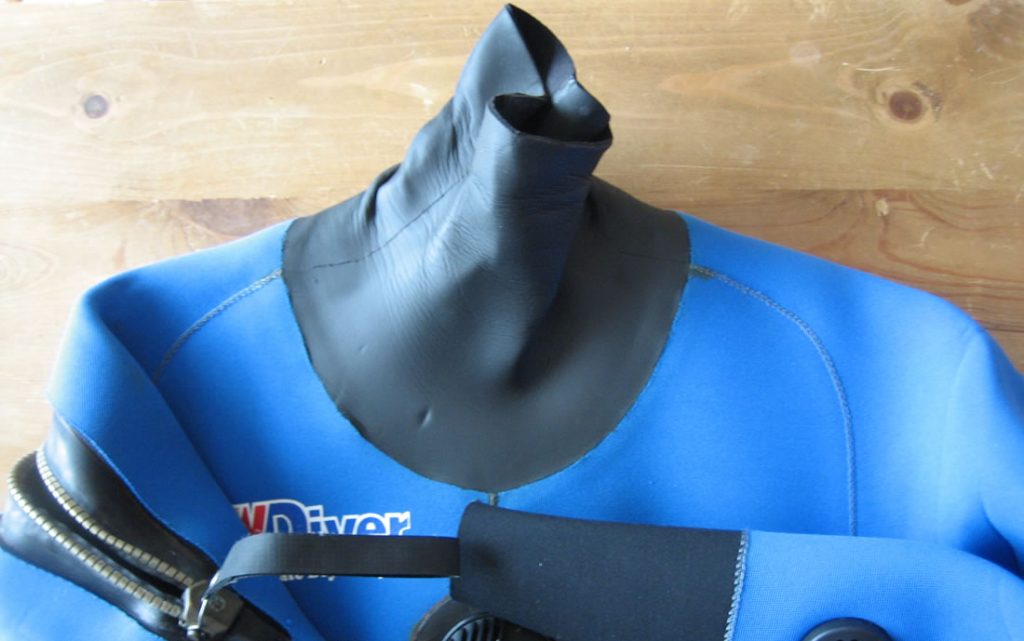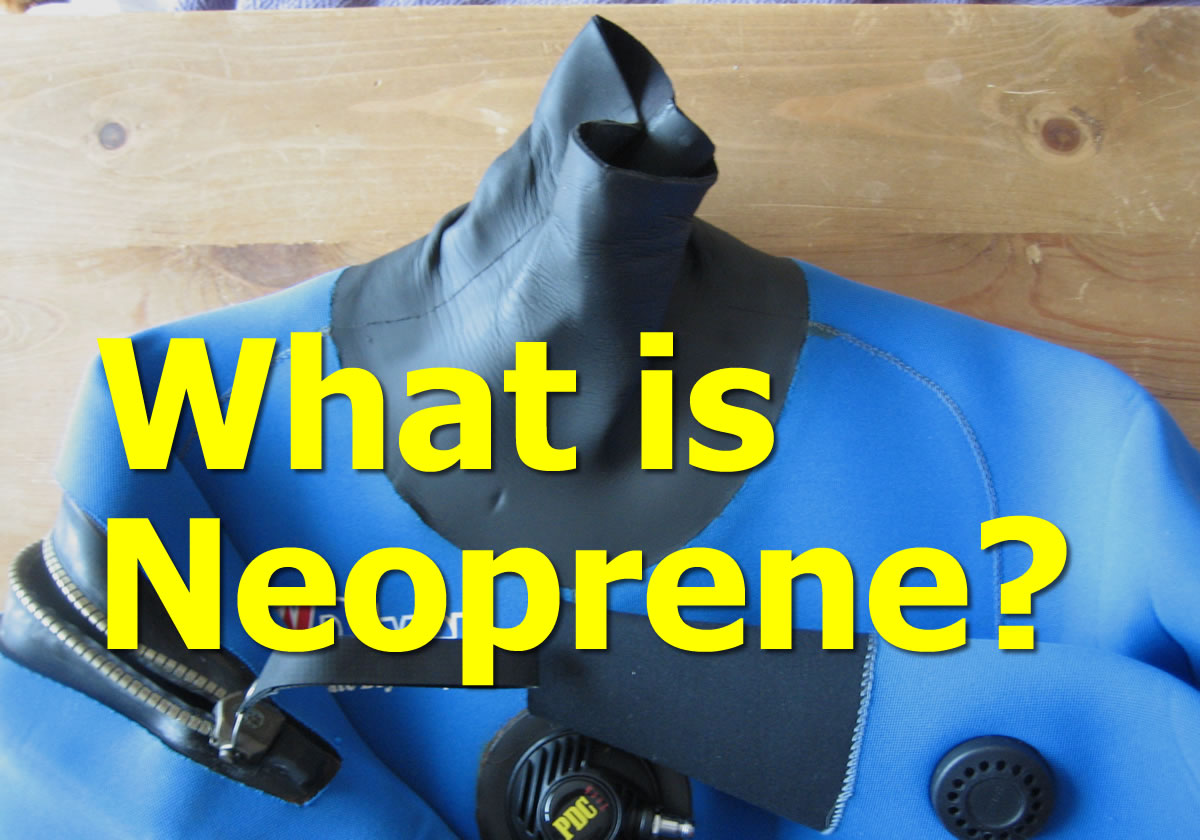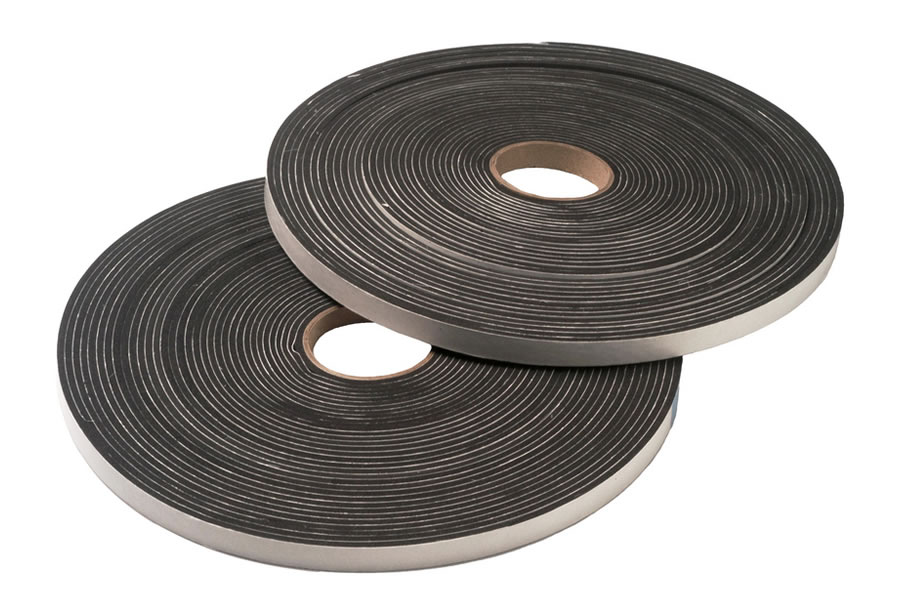Neoprene – What Is Neoprene? Is it Waterproof? Great for Seat Covers?


Neoprene was the first ever successful synthetic rubber created, dating back to 1930. Natural rubber was in such high demand during the 1920’s that the prices kept rising. The demand leads to a search for a comparable synthetic rubber. It was during 1930, that a chemist from DuPont, produced a rubber-like substance that became Neoprene.
Neoprene is a type of polymer. A polymer is a large molecule composed of repeating structural units. It is produced by the polymerization of chloroprene. The chloroprene binds all the molecules of the chemical reaction which creates polychloroprene chips. The chips are then melted and then mixed with various foaming agents and carbon pigments. This mixture is then baked until it expands. The end result is sheets of neoprene. Neoprene is sold either as solid rubber or in latex form.
According to the Encyclopedia Britannica, Neoprene is
“also called polychloroprene or chloroprene rubber, synthetic rubber produced by the polymerization (or linking together of single molecules into giant, multiple-unit molecules) of chloroprene.”
The process of treating crude or synthetic rubber is known as vulcanization.
Contents
Is Neoprene Waterproof?
Neoprene foam can be produced in either closed-cell or open-cell form. The closed-cell form is waterproof because it contains gas (nitrogen) cells. By manufacturing neoprene with nitrogen gas, the material becomes more insulated and makes the material very buoyant.
What Is Neoprene Fabric?
Neoprene can be produced into sheets at any thickness desired. Neoprene sheets are commonly found placed between pieces of other fabrics, such as polyester or spandex. Neoprene fabric is flexible, but mixing elastic fabrics (such as spandex) with the neoprene increases the flexibility. The additional flexibility has made neoprene fabric popular with designers. Neoprene fabrics are also scratch-resistant and weather-resistant, which makes it ideal for outerwear.
What Is Neoprene Used For?
- Wet Suits
- Gloves
- Neoprene Seat Covers
- Face Masks
- Laptop Sleeves
- Mouse Pads
- Koozies
- Gaskets
- Specialty Clothing
- Hoses
- Weather stripping
- Fire doors
Neoprene is extremely versatile and is used in many different products. Neoprene does not degrade as quickly as natural rubber, so it is used for gaskets or hoses. Neoprene also resists burning, so the material is used in weather stripping for fire doors or in gloves and face masks. Neoprene is most commonly used in scuba gear or wetsuits since it insulates so well and is waterproof. It can also be found in laptop sleeves, tablet holders, remote controls, mouse pads, lunch bags, can coolers or koozies, tires, clothing, car seats, car seat covers, and even Halloween masks. Due to its composition, neoprene has great resistance to water, oil and heat.
Where To Buy Neoprene Fabric?
Neoprene fabric can be bought anywhere from Amazon, eBay, Etsy, and any number of fabric stores or clothing manufacturers.
What Is Neoprene Made Of?
Neoprene starts as polychloroprene. Polychloroprene is mostly devised of carbon and hydrogen atoms. Polychloroprene is considered a polymer or long-chained molecule that links together smaller molecules. When the single molecules link together they form giant multiple-unit molecules of chloroprene.
Is Neoprene Rubber?
Neoprene and natural rubber are both polymers, but neoprene is made by chemical synthesis. Natural rubber is extracted from a tree and is sensitive to temperature changes. The heavy demand for rubber led to the development of neoprene.
Where Is Neoprene Made?
Neoprene is made through suppliers and rubber molders.
How Is Neoprene Made?
There are two ways to make neoprene; the first is an oil derived process and the second is a limestone process. The oil derived process is the most popular and the limestone process is considered more environmentally friendly.
Both processes begin with a chemical reaction using chloroprene which binds all the molecules of the reaction together, leaving polychloroprene chips. The process results in polychloroprene chips which are melted together and combined with other foaming agents and carbon pigments, then baked and sliced into sheets.
During the process to create neoprene, the oil-based method uses butadiene (derived from petroleum) while the limestone method uses acetylene (derived from calcium carbonate found in limestone). The limestone method uses special technology to convert the calcium carbonate into chloroprene rubber chips and then additional processing to create neoprene foam.
Neoprene created from the limestone process has very different characteristics than oil-based neoprene. Limestone-based neoprene differs from oil based because it has higher-density closed cell structure. The closed cells contain air bubbles packed tightly together. The benefit of the higher density closed cell structure is increased elasticity, durability, decreased water absorption, and increases heat retention.
Does Neoprene Float?
The amount of air inside neoprene will decide how much water can penetrate into it. The more air neoprene contains, then the less water can soak into it. When limestone neoprene is produced it is manufactured by added nitrogen. The added nitrogen increases the insulation and also increases the overall buoyancy because the cells do not absorb water. The traditional oil-based neoprene has lower cell penetration and liquid base, which means it has less air and allows more water to soak into it.
Does Neoprene Stretch?
Neoprene is a stretchy material. When neoprene is used to make wetsuits they can stretch five to six times its original length.
Are Neoprene Boots Warm?
Boots made of neoprene outer layers are designed to keep your own heat from escaping while preventing cold air from getting into the boots. Neoprene boots are most efficient if you encounter water since neoprene is also waterproof.
Are Neoprene Gloves Warm?
Gloves made with neoprene are designed to keep your own heat from escaping while preventing cold air from getting into the gloves. Neoprene gloves are most efficient if you encounter water since neoprene is also waterproof.
Are Neoprene Weights Safe?
Neoprene is one of the most popular materials used to cover dumbbells. Neoprene dumbbells have a soft, smooth coating, but is not slick and is easy to grip.
Is Neoprene Safe to Wear?
Yes, neoprene is generally safe, which is why it’s used for wet suits, gloves and other apparel items.
Why Are Neoprene Seat Covers Popular?
Neoprene seat covers are popular because the material is high-quality and highly durable. The material is strong and resistant to tears, waterproof, repels spills, and comfortable.
Can Neoprene Be Washed?
Neoprene can be washed but should be cared for cautiously. The first step is to rinse the item for one to two minutes. The next step is to use a mild detergent or mild shampoo, but do not apply the detergent or shampoo directly on to the item. Mix a small amount of the cleaner into a bathtub full of water and then hand wash the item. Wash the item gently, squeeze out the dirty water, and allow to soak for a little longer. Rinse repeatedly until all of the cleaner suds are gone. Air dry the item but do not place in direct sunlight because the UV rays will break down the neoprene faster.
Can Neoprene Be Recycled?
There are companies and waste management firms that recycle neoprene or items made of neoprene such as wetsuits. Neoprene is often chopped up or blended with other synthetic rubbers to create new materials. One of these materials is called resurrection rubber. This material is a combination of chopped neoprene and rubber. This new material, resurrection rubber, is used to make shoe soles.
Another way that neoprene can be recycled is donating wetsuits to several different companies that specialize in recycling the material. Wetsuits can be recycled into yoga mats, laptop cases, medical bandages, athletic shoe insoles, gloves, boots, doormats, and automotive pads.
Neoprene can also be recycled into sheets of rubber or even fabric. The fabric is sold by the yard and can be cut and sewn.
Neoprene can be recycled at home as well. If you have a sewing machine with the right needle, then you can create beer koozie, dog bed, mouse pad, or oven mitts. There are many ways to donate or recycle neoprene, so it does not end up in a landfill.
Can Neoprene Be Dyed?
Neoprene can be dyed while in production. The color is added while making the fabric. It is also possible to paint a new color over neoprene by using a rubber-based flexible paint. Once the item is painted, then the paint should be protected by adding a waterproof gel coating. The gel coating will prevent the paint from rubbing off when the item or fabric is used in water.
Can Neoprene Seat Covers Be Washed?
Neoprene seat covers can be washed. The suggested method is to combine a mild detergent or mild shampoo with water. Use a lint-free cloth to wash the covers, rinse, towel dry and hang to air-dry until completely dry.
Does Neoprene Have A Shelf Life?
The recommended shelf life for neoprene is 5-10 years. The shelf life depends on its storage conditions. The storage conditions can affect the quality and shelf life of neoprene products. If items are stored properly, then the product could be used through or possibly beyond the shelf life. If items are not stored properly, then the shelf life can be shortened. Ideally, neoprene items are stored in a dry cool place that is protected from light, moisture, oxygen, heat, and any chemicals.
Does Neoprene Have Silicone In It?
Neoprene and silicone are similar, but they are different materials. Neoprene does not specifically contain silicone in it. Neoprene and silicone can both be used to create similar products and each offers its own advantages.
Does Neoprene Have BPA?
Neoprene is a polymer used to create many different items. Neoprene is considered chemically stable and can be a solid or a liquid. Neoprene itself is not considered toxic, but the gases from production can be hazardous. Some adhesives that contain neoprene can cause skin sensitivity.
Why was neoprene invented?
The cost of rubber lead to a search for a comparable synthetic rubber.
Is neoprene toxic when heated?
When it is heated, it can release dangerous hydrogen chloride.
CalTrend Neoprene Seat Cover Facts and Information
Ford Neoprene Seat Covers
- Ford F650 Neoprene Seat Covers
- Ford F-350 Super Duty Neoprene Seat Covers
- Ford F-250 Neoprene Seat Covers
- Ford Fusion Neoprene Seat Covers
- Ford F-150 Neoprene Seat Covers
- Ford Ranger Neoprene Seat Covers
- Ford C-Max Neoprene Seat Covers
- Ford F-550 Super Duty Neoprene Seat Covers
- Ford F750 Neoprene Seat Covers
- Ford Explorer Neoprene Seat Covers
- Ford Edge Neoprene Seat Covers
- Ford Transit-250 Neoprene Seat Covers
- Ford E-150 Neoprene Seat Covers
- Ford Flex Neoprene Seat Covers
- Ford Fiesta Neoprene Seat Covers
- Ford Transit Connect Neoprene Seat Covers
- Ford Taurus Neoprene Seat Covers
- Ford Bronco Neoprene Seat Covers
- Ford Freestar Neoprene Seat Covers
- Ford Focus Neoprene Seat Covers
- Ford Expedition Neoprene Seat Covers
- Ford Escape Neoprene Seat Covers
- Ford Explorer Sport Trac Neoprene Seat Covers
- Ford Excursion Neoprene Seat Covers
- Ford Aerostar Neoprene Seat Covers
- Ford C-Max Neoprene Seat Covers
- Ford Transit-150 Neoprene Seat Covers
- Ford F-450 Super Duty Neoprene Seat Covers
- Ford Mustang Neoprene Seat Covers



